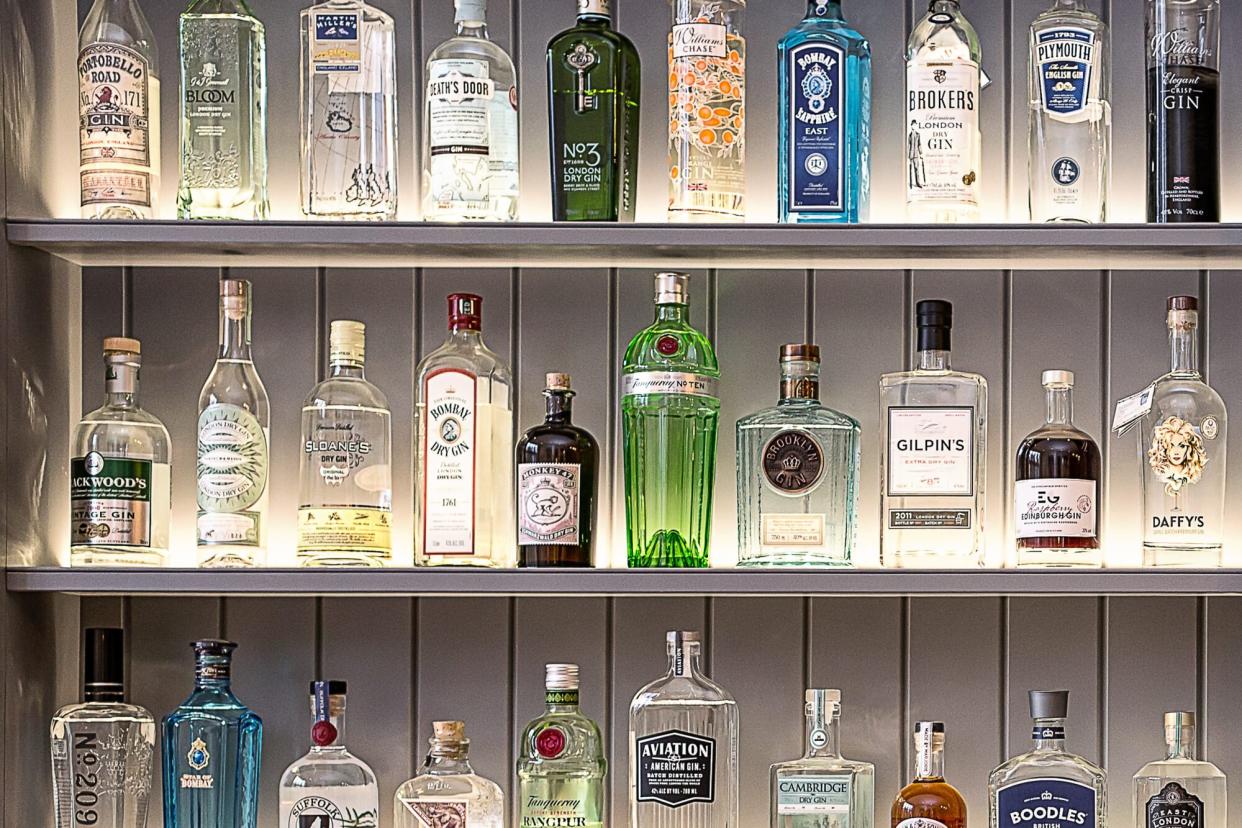Here's Everything You Need to Know About Gin, Including the Different Styles

Cristina Granena / Getty Images
Gin is one of the most popular spirits used in a variety of different well-known and beloved cocktails—you can find it in everything from a gin and tonic and a negroni to a gin martini and a gimlet. You might think that a gin is a gin is a gin—after all, how many different types can there be?–but the truth is what used to be a fairly straightforward spirit made with distilled wheat or barley and juniper berries has now become a massive category with dozens of different types and strengths. From London dry to Navy strength to pink gin, the possibilities are endless. Let us help you understand the nuances of gin and how to choose the right bottle for you.
Related: How to Store Liquor to Keep It at Its Best
What Is Gin?
Let's start with the basics: gin is an alcoholic beverage made by distilling a grain (usually barley or wheat) and then redistilling with an added blend of botanicals, one of which must be juniper berries. Various other herbs and spices can be added, which is what allows for so many different styles of gin. The redistillation is usually done by either steeping or vapor infusion. Every gin has its own precise recipe of grain and botanicals.
What Are the Different Styles?
For a spirit to be called a gin, it must have a dominant flavor of juniper, but beyond that there is a lot of leeway. This translates into lots of different styles. The most common include London Dry, Navy Strength, Plymouth, Genever, Old Tom, Aged, and New Western. London Dry gin is the most basic style, made with only pure grain spirit and natural botanicals—no artificial flavors can be added. Iconic brands like Beefeater ($29.99, wine.com), Tanqueray ($34.99, wine.com), and Bombay Sapphire ($32.99, wine.com) are all examples of London Dry gins.
Plymouth gin used to rival London Dry gin, and it referred to gins produced in the town of Plymouth, England, although now only one distillery remains there (called Plymouth Distillery). Plymouth gin is generally drier and more citrus-forward than London, and it also uses more roots in its botanical blend, giving it an earthier taste. Genever gin is another regional alcohol, but this one was created in 16th-century Holland. This type of gin is made with malted grains.
Navy Strength gin refers to the alcohol strength. While most gins have around 40 percent ABV, Navy strength has at least 57 percent ABV. Sweeter in flavor, Old Tom gin uses sweet botanicals like licorice or added sugar to make it fuller and sweeter, such as in Oregon's Aviation Old Tom Gin ($48.99, wine.com). Aged gin, a caramel-colored gin, is matured in oak barrels, some of which may have previously contained bourbon or Scotch, like Heyman's Gently Rested ($159, caskcartel.com) from England, which is aged for three weeks in old Scotch barrels.
Then there's New Western gin. This term began to be used in the early 21st century to differentiate the new small-batch craft gins from classic London Dry. It typically refers to gin that has flavorings or infusions added in redistillation and may not be as juniper forward. The infusions could include anything from yuzu to honey, and they're often driven by locally grown botanicals to give the gin a sense of terroir. For example, Vermont's Barr Hill Gin ($39.99, wine.com) is finished with locally produced honey. A subset of New Western gin is rose gin, or pink gin, which has become particularly trendy in recent years. It usually gets its color from roses, as is case with the Irish Glendalough Rose Gin ($40.99, drizly.com), but fruit like pink grapefruit or rhubarb or, in the case of the recently launched Mirbeau Riviera Dry Rosé Gin ($44.99, wine.com), rosé wine are also used.
How Do I Choose Which Gin to Buy?
When you're shopping for gin, it's important to think about what you'll be using it for. "Knowing how you would like to enjoy it is the first step of ensuring that you are bringing home the one that will best suit your preferences," says Ryan Welliver, bar director at the Tavern in New York City. "Gin really shines best in cocktails or mixed drinks. You will get the most out of a gin by allowing its botanicals to dance with other ingredients that will highlight some its best characteristics." Once you know what kind of cocktail you want to make, that can help dictate the type of gin you should get. For example, "London Dry Gin pairs best with classic cocktail recipes, like a martini or Negroni," says Welliver.
"You might want to pick up a more floral gin if you plan to pair it with ingredients that share some of the same notes of florality, like elderflower liqueur," Welliver adds. "If you're looking to pair your gin with vermouth or aromatized wine, you should go for a gin that has slightly more herbaceous tones to play off the botanicals subtly found in most dry vermouth."
The strength of a gin is also important to consider. "Gins with a higher ABV can serve as a backbone in a drink made with multiple ingredients or mixers like juices or carbonated beverages," says Welliver. "The higher alcohol content helps carry some the subtle flavors all the way through that you would generally see lost if you were to choose a gin bottled at a lower proof."

